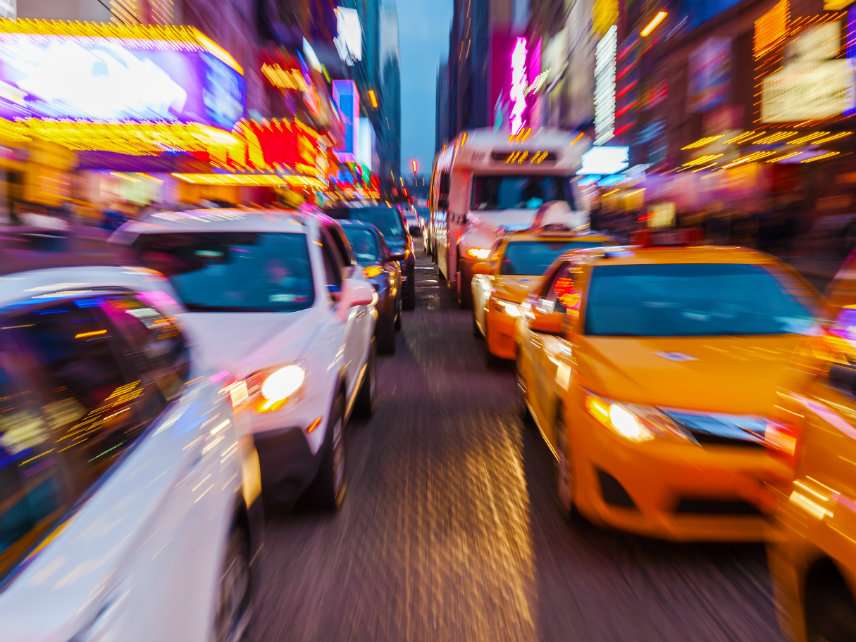New York Inches Closer to Charging Drivers for Subway Repairs
State lawmakers are warming to the idea of congestion pricing.

Congestion pricing is getting closer to becoming a reality in New York City, as local and state politicians scramble to find money to fix the city's ailing subway system and address its gridlocked roads.
On Monday, New York State Assembly Speaker Carl Heastie (D–Bronx) told reporters that the upcoming 2019 state budget would include a new fee on drivers entering central and lower Manhattan, with the revenue earmarked for subway repairs.
If passed, this kind of congestion pricing scheme would be the first of its kind in the U.S. Internationally, cities like Stockholm, Singapore, and London have used similar tactics to successfully reduce traffic congestion in their central business districts.
New York City is the fourth most congested metro-area in the country according to one recent report. Four of the top 10 most congested traffic corridors pass through the city.
Given the size of the problem, charging drivers for the road space they take up isn't a bad idea. But depending on how it's implemented, congestion pricing in New York could end up just being another government cash grab. The difference boils down to who the fee applies to and what it's spent on, says Baruch Feigenbaum, a transportation expert with the Reason Foundation (the nonprofit which publishes this website).
"I think the geographic area that they're choosing is correct," says Feigenbaum. But, he adds, "I think some of the money needs to go to improve roadways and it doesn't look like any of the money is going to do that."
According to reports of Heastie's comments on Monday as well as a congestion plan put forward by a taskforce convened by Gov. Andrew Cuomo last year, the revenue from any congestion pricing plan would go exclusively toward fixing New York City's ailing subway system.
Estimates from officials at the state's Metropolitan Transportation Agency (MTA)—which runs the subway—put the costs of needed capital improvements of the subway system as high as $60 billion over 15 years. The congestion pricing plan put forward by Cuomo's taskforce—which would charge drivers $11.52 to enter Manhattan streets below 60th street—could support about $15 billion in new bonds to pay for repairs.
That's not a bad idea, given that the subway can serve as a workable alternative for many folks who're currently driving or taking for-hire vehicles in Manhattan. These road users would benefit from a smoother, more reliable transit service that catches fire less regularly.
For many suburban commuters or residents in New York City's outer boroughs, however, driving is their only realistic option. Asking these motorists to pay more to enter the city without spending any of that new revenue on improving the road network they use would make congestion pricing just another tax.
Some legislators have proposed spending new revenue on commuter rail lines that run out to Long Island and the suburbs north of New York City. That would broaden the benefits of a congestion pricing scheme, but still not do much for those who're dependent on driving.
Another concern are the numerous exemptions being proposed. The New York Times reports that there might be carve outs for low-income drivers or those travelling to things like medical appointments. At least one lawmaker has proposed exempting New York City residents from any new fees.
"The political tendency is to exempt as many people as possible and that's obviously going to cause some revenue problems," says Feigenbaum. It would also lessen the impact any congestion pricing plan would have on actually reducing congestion, which is the entire point of the policy.
There's still a lot of details to be worked out. Lawmakers are hoping to pass some sort of budget before April 1. Depending on what compromise legislators settle on, New York could serve as a model for congestion pricing and traffic management, or a cautionary tale of what not to do.
Rent Free is a weekly newsletter from Christian Britschgi on urbanism and the fight for less regulation, more housing, more property rights, and more freedom in America's cities.


Show Comments (57)